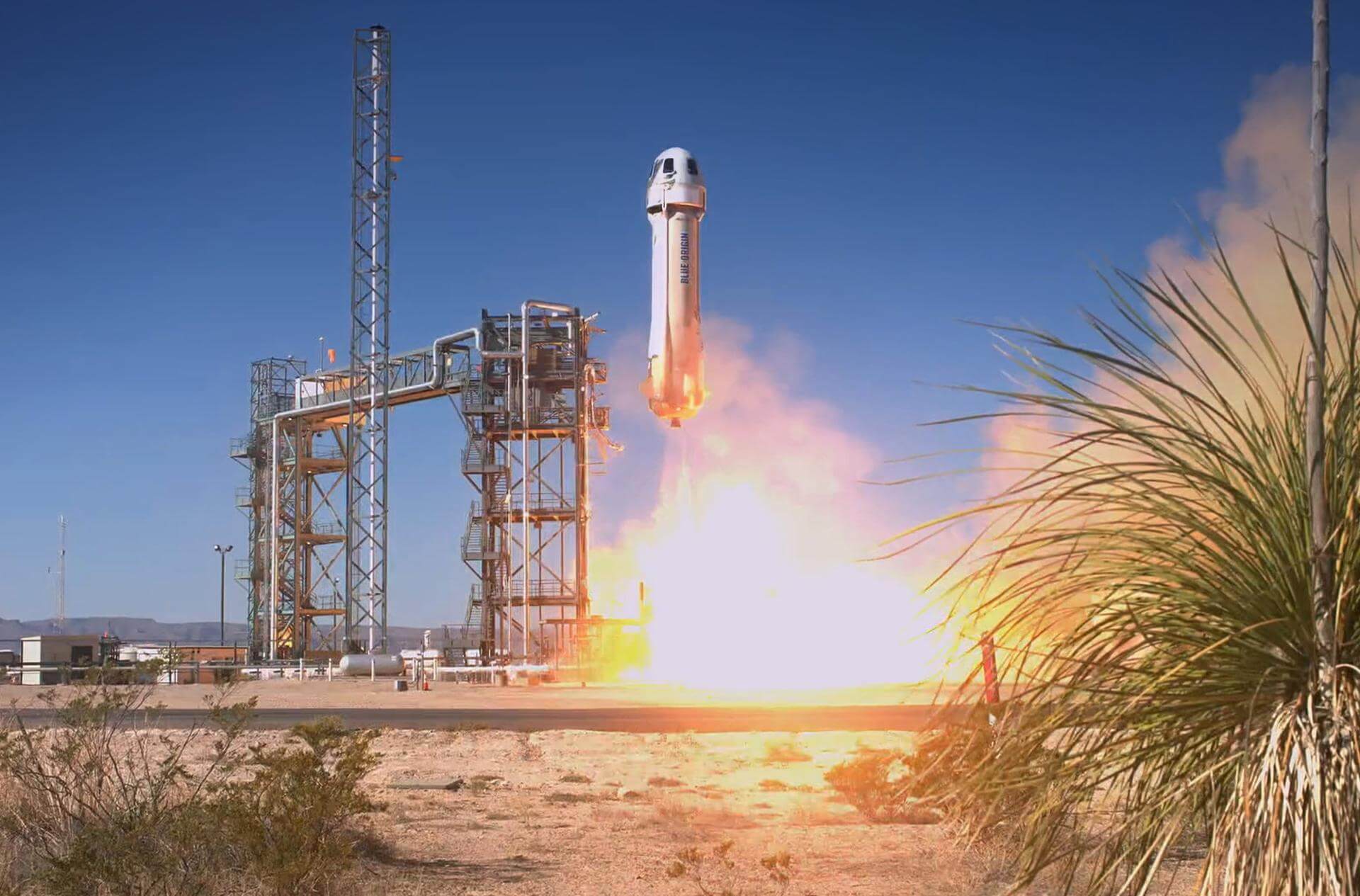
New Shepard
Active Re-UsableBlue Origin (BO)
April 29, 2015
Description
The New Shepard reusable launch system is a vertical-takeoff, vertical-landing (VTVL), suborbital manned rocket that is being developed by Blue Origin as a commercial system for suborbital space tourism.
Specifications
-
Stages
1 -
Length
15.0 m -
Diameter
3.7 m -
Fairing Diameter
― -
Launch Mass
75.0 T -
Thrust
490.0 kN -
Apogee (Sub-Orbital)
100.0 km
Family
-
Name
New Shepard -
Family
― -
Variant
― -
Alias
― -
Full Name
New Shepard
Payload Capacity
-
Launch Cost
― -
Low Earth Orbit
― -
Geostationary Transfer
Orbit
― -
Direct Geostationary
― -
Sun-Synchronous Capacity
―
Blue Origin
Commercial
CEO: Jeff Bezos
BO 2000Blue Origin is an American privately funded aerospace manufacturer and spaceflight services company set up by Amazon.com founder Jeff Bezos with its headquarters in Kent, Washington. The company is developing technologies to enable private human access to space with the goal to dramatically lower costs and increase reliability. Blue Origin currently launches its New Shepard sub-orbital vehicle from its West Texas launch site, they are currently constructing a launch pad for their orbital vehicle New Glenn at Cape Canaveral LC-36.
Upcoming Spaceflights
New Shepard | NS-37
Blue Origin | United States of AmericaCorn Ranch, Van Horn, TX, USA
TBD November, 2025
New Shepard | NS-36
Blue Origin | United States of AmericaCorn Ranch, Van Horn, TX, USA
Oct. 8, 2025, 1:40 p.m.
New Shepard | NS-35
Blue Origin | United States of AmericaCorn Ranch, Van Horn, TX, USA
Sept. 18, 2025, 1 p.m.
Status: Launch Successful
Mission:
NS-35 is the 35th flight for the New Shepard program. This flight will fly more than 40 scientific and research payloads to space and back, including 24 experiments from NASA’s TechRise Student Challenge and payloads for Johns Hopkins Applied Physics Laboratory, Oklahoma State University, University of Florida, Carthage College, University of Central Florida, Teledyne, Space Lab Technologies, and Teachers in Space, among others.
Suborbital NS-5 - Flight Proven ( ) Corn Ranch Landing Pad, West TexasNew Shepard | NS-34
Blue Origin | United States of AmericaCorn Ranch, Van Horn, TX, USA
Aug. 3, 2025, 12:42 p.m.
New Shepard | NS-33
Blue Origin | United States of AmericaCorn Ranch, Van Horn, TX, USA
June 29, 2025, 2:39 p.m.
New Shepard | NS-32
Blue Origin | United States of AmericaCorn Ranch, Van Horn, TX, USA
May 31, 2025, 1:39 p.m.
New Shepard | NS-31
Blue Origin | United States of AmericaCorn Ranch, Van Horn, TX, USA
April 14, 2025, 1:30 p.m.
New Shepard | NS-30
Blue Origin | United States of AmericaCorn Ranch, Van Horn, TX, USA
Feb. 25, 2025, 3:49 p.m.
New Shepard | NS-29
Blue Origin | United States of AmericaCorn Ranch, Van Horn, TX, USA
Feb. 4, 2025, 4 p.m.
Status: Launch Successful
Mission:
NS-29 will simulate the Moon’s gravity and fly 30 payloads, all but one of which is focused on testing lunar-related technologies. The payloads will experience at least two minutes of lunar gravity forces, a first for New Shepard and made possible in part through support from NASA. The flight will test six broad lunar technology areas: In-situ resource utilization, dust mitigation, advanced habitation systems, sensors and instrumentation, small spacecraft technologies, and entry descent and landing. Proving out these technologies at lower cost is another step toward Blue Origin’s mission to lower the cost of access to space for the benefit of Earth. It also enables NASA and other lunar surface technology providers to test innovations critical to achieving Artemis program goals and exploring the Moon’s surface. The New Shepard crew capsule is using its Reaction Control System (RCS) to spin up to approximately 11 revolutions per minute. This spin rate simulates one-sixth Earth gravity at the midpoint of the crew capsule lockers. In simulated lunar gravity, customers can accelerate their learning and technology readiness for lunar payloads at much lower cost.
Suborbital NS-5 - Flight Proven ( ) Corn Ranch Landing Pad, West TexasElectron
The Nation God Navigates (iQPS Launch 5)
Rocket Lab Launch Complex 1B - Rocket Lab Launch Complex 1, Mahia Peninsula, New ZealandSynthetic aperture radar Earth observation satellite for Japanese Earth imaging company iQPS.
Ariane 62
Sentinel-1D
Ariane Launch Area 4 - Guiana Space Centre, French GuianaSentinel-1D carries an advanced radar technology to provide an all-weather, day-and-night supply of imagery of Earth’s surface as part of the Sentine…
Long March 7A
Unknown Payload
201 - Wenchang Space Launch Site, People's Republic of ChinaDetails TBD.
LVM-3 (GSLV Mk III)
CMS-03 (GSAT-7R)
Satish Dhawan Space Centre Second Launch Pad - Satish Dhawan Space Centre, IndiaCommunications Satellite for the Indian Navy, replacing GSAT-7 for secure real-time links between Indian warships, submarines, aircraft, and shore-ba…
Falcon 9
Bandwagon 4 (Dedicated Mid-Inclination Rideshare)
Space Launch Complex 40 - Cape Canaveral SFS, FL, USADedicated rideshare flight to a mid-inclination orbit with dozens of small microsatellites and nanosatellites for commercial and government customers.



